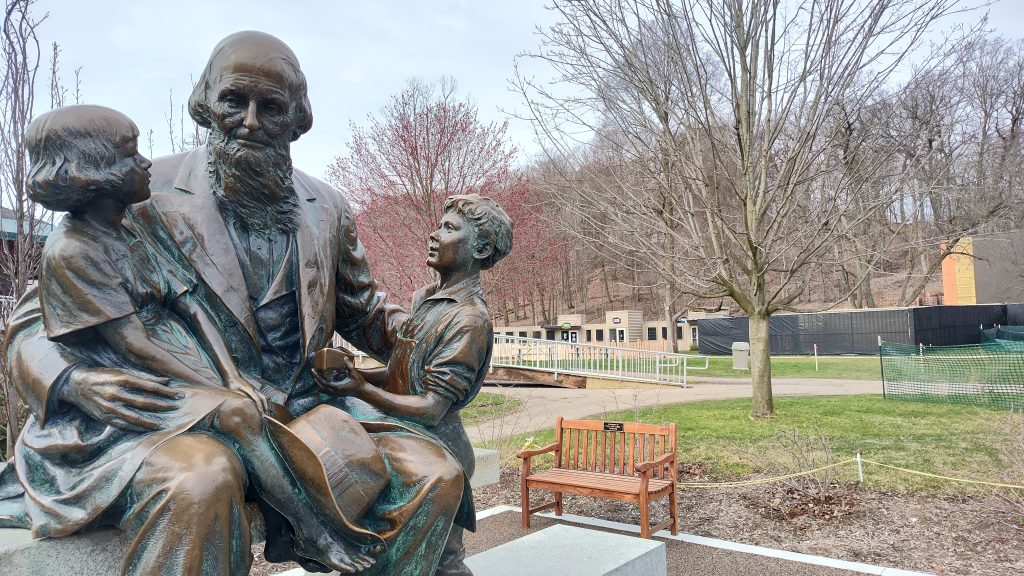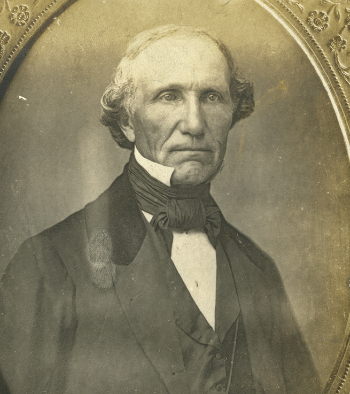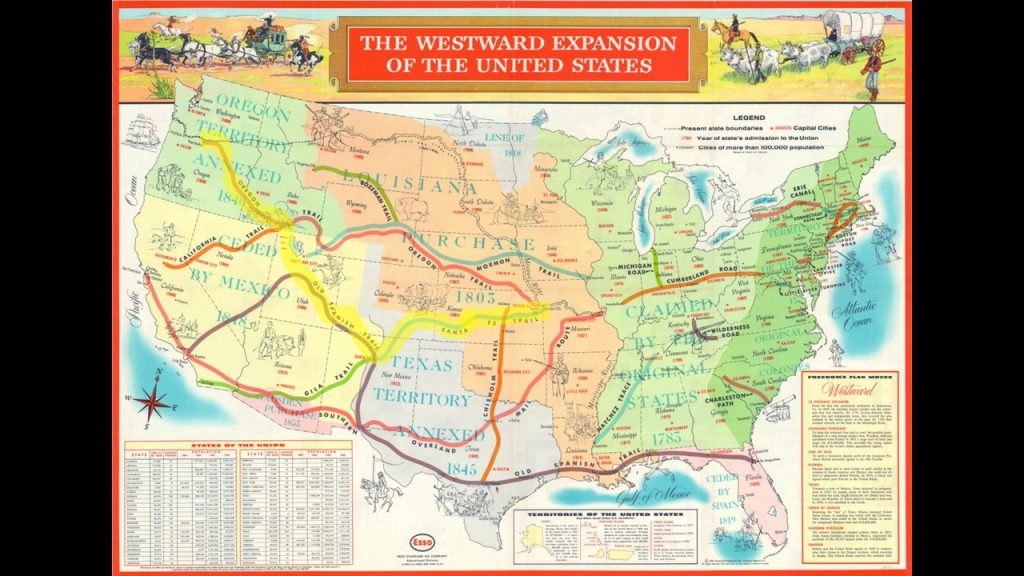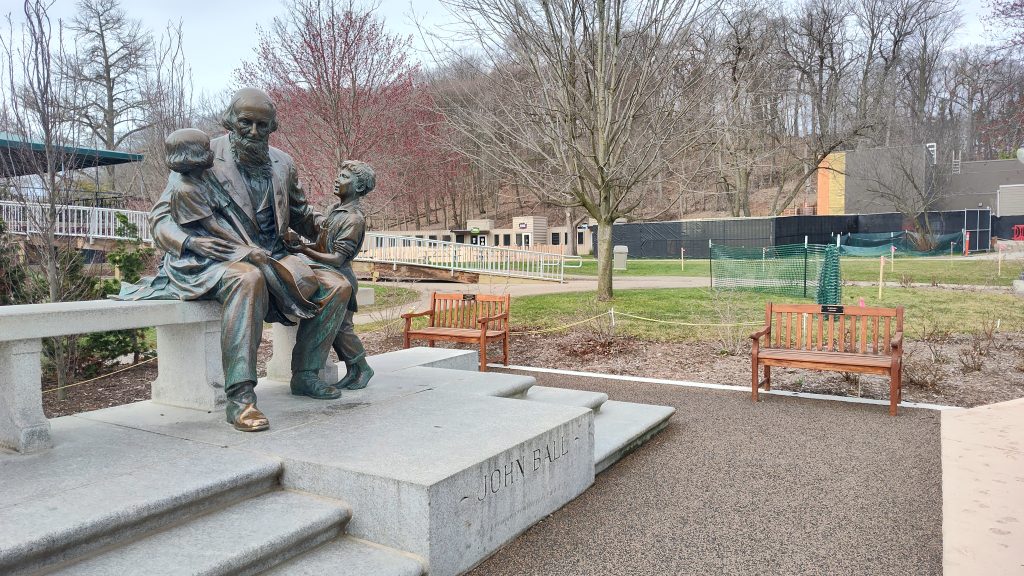Who was John Ball, the namesake of our beloved Grand Rapids zoo? John Ball was a multi-faceted gentleman. He’d been a realtor, a lawyer, an adventurer, an author, a teacher and a businessman. I hadn’t realized what an epic exploration he’d taken in the early 1800’s! Join me on this fascinating journey of John Ball!

Born in 1794 in Tenny Hill, New Hampshire, John Ball received an intermittent education from their local minister, that is when John was not needed on the family farm. In spite of the random lessons, John’s insatiable curiosity continued. This led him to meeting President Andrew Jackson before crossing the North American terrain all the way to the Pacific Ocean.
Westward Expansion
Fur gathering adventurers began their westward journeys by taking trains to Independence, Missouri. Then they road on horseback and hiked across North America. Fur trappers set pioneer paths between 1811-1840. These included the more established, Santa Fe Trail, and later The Oregon Trail.
Expedition Acceptance

Photo Credit: Grand Rapids Public Library
John Ball had shared correspondence with the first-time expedition leader, Nathaniel Wyeth, about his upcoming 1832 journey to Fort Vancouver. Entrepreneur, Nathaniel Wyeth, had wanted to set up businesses in the northwest region: lumber, salmon and furs. Ball had hoped “to take a little recreation” and join the exploration. After some time, Wyeth finally invited John to join his team for their March 26 departure from Baltimore.
Meeting President Andrew Jackson
With time to spare, before leaving on the westward expedition, John Ball headed to Washington D.C., which had been established as our nation’s Capital 38 years earlier. After watching U.S. Congress in session, John Ball stopped by the White House and asked to meet President Andrew Jackson, the seventh leader of our nation, whom John held in high regard. John Ball’s request was granted and the men shook hands in a brief, friendly greeting.
“Born To Wander” – Expedition Observations
“Born To Wander” is John Ball’s autobiography which had been assembled from his notebooks and writings by his daughters: Kate Ball Powers, Flora Ball Hopkins and Lucy Ball. His writings have painted a picture of the rugged terrain and epic survival. The following includes some excerpts from his book.

Their Expedition Begins
After taking the B & O Railroad and a steamboat to St. Louis, the group met Mr. William Sublette, a leader in fur trade expeditions. Sublette was planning his annual trek out west, so Wyeth asked to join Sublette’s excursion. William Sublette agreed under the condition that all the men would follow his commands.
Eighty men, each with three horses, set off on the 12th of May, “on said Santa Fe road over a beautiful prairie country.” One horse could be ridden while the other two carried gear.
Horses
Ball had written about their horses. “During the day they would send them out on to the open prairie to feed with the mounted guard with them, to run them into camp, if the Blackfeet, in whose country we were, should make a dash down the mountain side to steal them. At night they would bring them into camp where they would quietly remain among their owners tents till morning.”
When the adventurers arrived at a rendezvous point, Ball had penned, there were “five or six hundred horses. These mountain horses are of the Arabian stock, brought to Mexico by the early Spanish settlers–light of limb and fleet. It was a grand sight to look on their immense herd out on the prairie of all colors from white to black and many spotted ones.”
Later, Ball wrote, “We slept with our horses’ long halters tied to a bush near us or sometimes in our hand.” At least two men at a time stood guard over their camp.
As the team proceeded westward, The Rocky Mountains came into view and presented beauty and challenges.
The Mountains
“This mountain-pure air and ever-shining sun is a grand, helpful thing for both soul and body, especially when feeding on only meat and water.”
At another rendezvous point Ball had written, “And I never witnessed such recuperation of men as during the two weeks we lay at our ease in this camp, feeding on the dried buffalo meat, and our drink, the pure cool mountain creek, two hundred white men and perhaps nearly as many Indians, there was quite a social time, and a great exchange of talk and interesting indeed, from the wide and varied experiences of the narrators.”
The Natives
John Ball had written about the native people of the land. “I observed with much interest their ways. Their usual dress was a frock and leggings and moccasins made from dressed deer skin, and a well dressed buffalo skin with the hair on for a blanket, to ride on and sleep in. The frock of the women was longer than that of the men. Both had their dresses somewhat ornamented by a projecting edge of the leather, cut into a fringe, shells, feathers and beads, when to be had, worked into their dresses, or in their hair.”
John Ball had taken notes about how the natives were “always peaceful in their ways.” He had admired how, in reference to furs, they always knew “just how much” to get for the articles of clothing they needed to make.
The native women were “as good horsemen as the men.” Ball wrote, “One day we delayed our march, we knew not why, till after a time we heard an outcry for a few minutes from Frapp’s wife, out to one side in some bushes. And we soon learned the cause of our laying over, was to give her the opportunity to lay in, give birth to a child in camp and not on our day’s march. But the very next day, she sat her newborn baby, feet down, into a deep basket that she hung to the pummel of her saddle, mounted her horse and rode on in the band as usual. ” (I just have to comment, “Wow!” and I’ll say it backwards, “Wow!”)
Hunger
As the mountain terrain continued to be rough and the food rations were “short,” John Ball had written how the party had weakened. The group had to trap and eat whatever they could find, including one horse. “We ate of everything that fell in our way, but the snakes, I think.”
Pierre’s Hole – The Grand Rendezvous
Several groups of fur traders had gathered together at Pierre’s Hole which Ball described as, “a fine grassy plain among the mountains.” After their respite, the bands headed out their separate ways. Nathaniel Wyeth’s party of twelve men, including John Ball, had traveled seven miles when they came upon a band of Gros Ventre, natives on horseback: men, women and children. This group of natives had been known to be aligned with the Blackfeet tribe.
The Battle With The Blackfeet Tribe
One man in Wyeth’s group, Antoine Godin, held a significant grudge against the Blackfeet tribe. Apparently, his father, Thyery Godin, had been killed by the Blackfeet. Nobody had known this, so when Godin and Baptiste Dorian offered to civilly approach the Gros Ventre Chief, the group believed Godin held good intentions.

(Paul Kane, “Wanderings of an Artist,” 1859:424–425)
None the less, Godin had grabbed the Chief’s rifle and ordered his friend, Dorian, to shoot. Dorian’s close-range fire, killed the Chief instantly. This catalyst act immediately brought about a rageful slaughter between the groups.
As night fell, Wyeth’s faction retreated from the Blackfeet area as a battle continued between fur traders and the extensive tribe. All twelve men continued their journey toward Fort Vancouver.
Fort Vancouver
On October 29, 1832 the band arrived at Fort Vancouver. John Ball was puzzled by the workers at the fort. He couldn’t identify them as white men or black men or natives. Ball soon learned that these people had been called, “Kanakas,” from “The Sandwich Islands,” which we know as Hawaii.

Photo Credit: Oregon Encyclopedia
John Ball didn’t feel his journey would be complete until he reached the Pacific Ocean. So he began paddling the Columbia River to the beach.
The Pacific Ocean
It was the nineth of November when John Ball stood among “the rolling waves, washing its sands and seaweeds to my feet.” After seven and a half months on horseback, as well as walking, John Ball enjoyed “the happiest hour of all my journey, knowing I had crossed the continent.” He had made it to the Pacific Ocean!
After soaking in the sunshine on the sandy beach, John Ball returned to Fort Vancouver as a guest of Dr. John McLaughlin.
The First European Teacher in Oregon
Dr. John McLaughlin, the oldest partner and physician of Fort Vancouver, had hosted the Wyeth explorers. Not wanting to just sit around, John Ball had requested a job from Dr. McLaughlin. John had wanted to contribute to the community.
Ball had written, “But after further urging, he said if I was willing he would like to have me teach his son and other boys about the fort. I, of course, gladly accepted the offer. So he sent the boys to my room to be instructed, all half-breed boys of course, for there was not then a white woman in Oregon. The doctor’s wife was a Chippewa woman from Lake Superior. Well, I found the boys docile and attentive and making good progress.”
As spring approached and classes came to a close, John Ball decided to return to his roots by farming a small plot of land.
A Lonely Summer
Securing property outside the fort’s walls, John built a cedar cabin using bark to seal the roof. He farmed this land all summer, but found it to be a “primitive, lonely life” and his new home as “a country of falsehood and low cunning.” So he made plans to once again travel east. But he couldn’t imagine going the way he’d come by the Santa Fe Trail. Instead he traded his crops to obtained a passage by ship.
John Ball’s Route – The Nautilus
“Once crossing the mountains and the plains I thought enough,” he wrote. On Sept. 20, 1833.

John spent 38 days aboard “The Boxer” from Rio de Janeiro to Norfolk, Virginia.
Traveling aboard The Nautilus, a ship owned by the Hudson Bay Fur-Trading Company, had proven to be a whole new set of trials. Seasickness struck, especially at the beginning of the journey. John had found some relief by sleeping on deck with tarps or a sail to keep him dry. Sometimes he even slept inside a dinghy.
Ball also suffered from boredom on this extended journey. He had brought along a volume of Lord Byron poems, a navigator’s guide and a Bible. But, the endless hours, piled on top of one another, proved to only provide weariness. The food had been a disappointment, too. It had been three-year-old rations of salted beef, which he described, “as hard as a brick.”
The Sandwich Island’s terrain, today’s Hawaii, captivated Ball with the volcanic mountains. Ball investigated the region with interest as he enjoyed fresh fruit and meat.
There had been brief stops in Tahiti and the Pitcairn Islands before rounding Cape Horn and heading north. It was early June when the Nautilus pulled into port at Rio de Janeiro.
John Ball’s Route – The Boxer
In Rio de Janeiro, John Ball met Lt. David Farragut, the captain of The Boxer, a militant schooner headed to Virginia. When John asked if he could join them, the soldiers and their Lieutenant quickly created a plan. Being a military ship, John Ball would have to provide a service in order to be permitted to ride along. The captain hired John Ball as his “personal clerk,” where John would write down entries in the captain’s log, which only took about fifteen minutes a day.
Ball wrote of his time aboard The Boxer, “The living is a great improvement on that of The Nautilus, and the company ever pleasant and often instructive.” After 38 days at sea, The Boxer pulled into port at Norfolk, Virginia.
John Ball Returns Home
After riding a series of steamers, John arrived at his family farm in New Hampshire. “They were all as glad to see me as though I had come from the grave, for they did not think it an equal chance that they ever should see me again,” he wrote.
After a year working at a hometown law firm, John felt a longing to once again explore. He headed to the Michigan Territory in 1836.
The Rapids on The Grand – A Visionary
In 1836, $1.25 held the promise of an acre in the Michigan Territory. John Ball had worked as a real-estate broker for his friends “back east.” They had wanted to purchase land along The Grand River.
As John Ball secured transactions of land ownership, he met and married Mary Webster, a school teacher. He and his wife, Mary, had ten children.
John Ball, a firm believer in public education, had served on the first public school board which had created the educational system for our state. He became a legislator and was instrumental in starting The Grand Rapids Public Museum, as well.
Their youngest had been born in Europe when John was 77 years old. The couple had brought their family across the Atlantic to live for a few years so they could experience other cultures.
“Ball 40”
John Ball bequeathed 40 acres of land to the City of Grand Rapids upon his death in 1884. This land had been known as “Ball 40” and “Central Park.”
Some park workers had been housing orphaned and injured animals at Ball 40. Inquiries were made about the city funding these animals. In 1891 adding other animals to the collection had been mentioned in the city commission records. It had been decided that the city wouldn’t fund these creatures, but several commissioners had reached into their own billfolds and produced donations.
John Ball Park Zoo
Using these donations a few animals were purchased and John Ball Park Zoo was born! The 40 acres included carriage trails, a swimming pool, formal gardens, a conservatory, bandstand, a dance parlor alongside the zoo. In 1905 this popular park had a budget line of $5,000.00. Where the next highest city park had a budget of only $80.00.

Photo Credit: “Born to Wander” by John Ball.
The 1925 John Ball statue had been sculpted by Pompeo Coppini from a local school girl’s design idea.
Photo Credit: John Ball Zoo
The City of Grand Rapids had commissioned an honorary statue of John Ball in 1925. Designs had been submitted by local school children. Pompeo Coppini had used Virginia Ball, granddaughter, and Waldo, John and Mary’s son, as models.

I found John Ball’s epic adventure completely fascinating! Honestly, I get tired from a four hour drive. I can’t imagine traveling over 850 miles by horseback! John Ball, the eclectic gentleman, has left a legacy here in Grand Rapids. Next time you walk by the quiet, grandfatherly statue of John Ball, you’ll be wise to the continental capers of this dapper man.
Related Links:
“Born To Wander” Autobiography by John Ball is available on Amazon. This book had been compiled from John Ball’s notes by his daughters Kate Powers, Flora Hopkins and Lucy Ball.
Resources:
John Ball Zoo website
Grand Valley historical John Ball website
Oregon Encyclopedia article
The Autobiography of John Ball: Across The Plains to Oregon 1832 by The Dean Hicks Company 1925 site
Oregon History Project article
WOODTV “Ball’s Long And Winding Road To West Michigan” article by Matt Jaworowsky Nov. 2024
Mountain Men and Life in the Rocky Mountain West article
Spotter Up article
Britannica Westward Movement William Henry Jackson painting
Curtis Wright Maps Western Expansion
Quizlet western hemisphere map
Visit Vancouver Washington website





